Found Items for the Science Area are Rich With Mathematical Possibility
I started thinking about the intersections between the Science or Discovery Center and Math opportunities in the classroom when I taught Math and Science for the Young Child. I found it interesting that many of the textbooks we reviewed to be used for the course, separated much of the content between science learning and math learning into distinct categories. I think the areas of intersection are broad and, if presented in appropriate ways, the Science area can and should be considered a Math area as well.
An early childhood science area is usually made up of tools used for exploring materials and collections of materials. Tools such as magnifying glasses, goggles, light tables, mirrors, magnets, specimen viewers,sorting trays, tweezers and thermometers (to name a few) should be made available to children at all times so they can investigate the “collections” you have in your room. Ideally, the children themselves helped in developing the classroom collections. For example, during walks around the neighborhood, the children can collect leaves that have fallen to the ground. At this time of the year, your leaf collection can be pretty spectacular. Unfortunately, this collection needs to be replaced annually. as the leaves will dry out and fall apart. That process, in and of itself, is a pretty interesting one for children to explore.
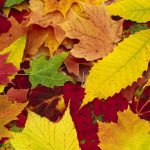
It is nice to have a collection of rocks and stones. Again, these will range in type depending on where you live. Outside of small pebbles (choking hazard) I would encourage the children to collect all sorts of rocks. The wider the selection, the more attributes they will have. 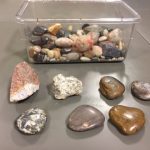 Since Chicago is right on Lake Michigan, we also have a never ending supply of shells. This collection can take years to build, but shells are an awesome found material that can be explored in a variety of ways.
Since Chicago is right on Lake Michigan, we also have a never ending supply of shells. This collection can take years to build, but shells are an awesome found material that can be explored in a variety of ways. 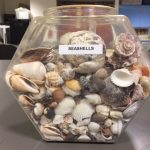
So what does all of this have to do with math?
It is pretty fascinating to observe young children investigate materials and collections in the science area. I like to consider ways that children might use a variety of materials in authentic ways, with enough time and space to allow for deep exploration. It is a natural instinct for them to separate the items, categorize them, look for common traits or characteristics, order them, sort them, and count them. The more interesting the collection, the more the children will want to spend time with it. Imagine putting out the container of seashells you see above. There are a lot of shells all crammed in there. I am not so sure that this is the best way to encourage deep engagement. Try reducing the collection to a smaller variety and then place those on a tray with a magnifying glass. What do the children do? How do they approach the materials? How can you support their explorations while encouraging their instincts to categorize and sort?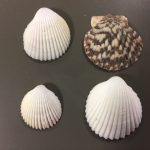 In the example above, the teacher has put out 4 shells. They all have a common shape however, the colors and sizes are different. This seemingly simple set-up encourages logico-mathematical thinking. Children are faced with a relationship conundrum. The shells look the same but they are different. It is in their “differences” that the children are able to identify the relationships between them. One shell is smaller. One shell has stripes. They have to think about “same and different.” They also have to identify their attributes. It reminds me of the Sesame Street song, “One of These Things is Not like the Other” where three items in a collection are similar and one is dissimilar. Here, three shells are white and one is not. Three are big and one is not. In order for children to figure this out, they have to make sense of the relationships between them.
In the example above, the teacher has put out 4 shells. They all have a common shape however, the colors and sizes are different. This seemingly simple set-up encourages logico-mathematical thinking. Children are faced with a relationship conundrum. The shells look the same but they are different. It is in their “differences” that the children are able to identify the relationships between them. One shell is smaller. One shell has stripes. They have to think about “same and different.” They also have to identify their attributes. It reminds me of the Sesame Street song, “One of These Things is Not like the Other” where three items in a collection are similar and one is dissimilar. Here, three shells are white and one is not. Three are big and one is not. In order for children to figure this out, they have to make sense of the relationships between them.
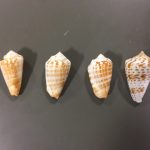
The differences between these shells is much more subtle. You can hardly see the color change in the fourth shell. But, if you provide the science tools, like a magnifying glass, the children will see the differences much more clearly. You can lay shells out on the light table as many of them are opaque or partially opaque. The light will come through the shells in places and allow the children to see details they might not otherwise notice,
When you put out your your leaf collection, help organize the leaves in some fashion so children can approach them with purpose. Perhaps start with the green leaves. These are less likely to fall apart as the children handle them, and may be a little bit easier to study. They will probably still lay flat so it is possible to put them under a microscope.
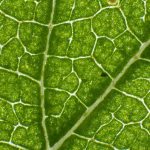
This is a leaf from a Birch tree. You can clearly see the cells and the veins running through it. Depending on the quality of your microscope, the children will see some version of this and can make great observations about what they see. Point out some of the characteristics of the leaves they are looking at. Are they symmetrical? If they are, then the children can fold them in half along the center vein and both sides will match up. If they are asymmetrical, they won’t.
On another day, bring out the leaves that have begun turning colors. How are these different? How are they the same? Be sure to leave a few green ones out for comparison. Have the children feel the difference between the textures of the leaves as well. Observe as they use their math skills to organize the collection into categories that make sense to them.
How else can you use the science area to support early math competencies?
I really love science and math. But I share a room. Younger children in the morning and older children in the afternoon. The older children are not respective of our things and they get torn up or come up missing. It is very frustrating.
The biggest problem is that some of the items you might want in your three-year-old room might be choking hazards for the younger children. This makes sharing the space even more difficult.
In my toddler classroom my math and science center is centered around the water table. Right now I have magnetic items in the water table and even froze some magnets inside of ice cubes. Its fun to watch them observe and as well as sharpen their math skills. Anything that I put in water is amazing them.
Would a 3 year old recognize that Patterns must repeat itself 3 times or more to be considered a pattern?
Some might, and others may not. It is experience coupled with opportunity over time, that makes the schemas stick.
I agree that the “line” between math and science centers is definitely blurred if present at all. I love watching the children learn and explore natural objects we bring in from outside. And of course some of their first actions are to count them and sort them. A great combination material/activity!
I like it when children can count and sort items that they bring from the outside. This helps use all areas of development not just a singular one.